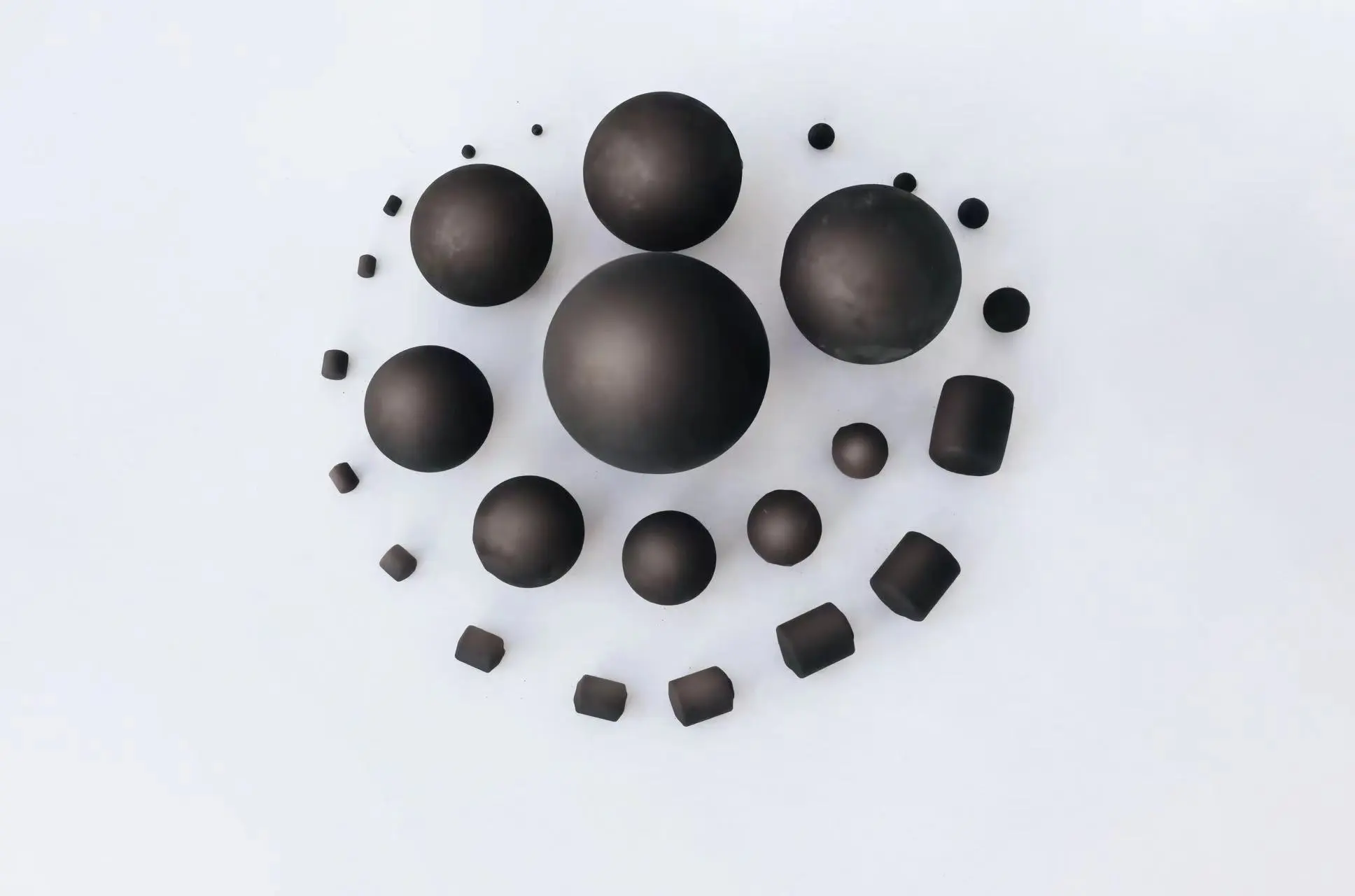In the world of industrial grinding and material processing, milling balls play a crucial role in achieving optimal results. These small but mighty spheres are the unsung heroes of numerous industries, from mining to pharmaceuticals. This comprehensive guide will delve into the intricacies of milling balls, their applications, and how to choose the right ones for your specific needs.

What Are Milling Balls and Their Uses?
Milling balls, also known as grinding balls or media, are spherical objects used in ball mills to grind materials into fine particles. These balls come in various sizes and materials, each designed to meet specific grinding requirements.
The primary function of milling balls is to reduce the size of particles through impact and attrition. As the mill rotates, the balls cascade and tumble, crushing and grinding the material between them. This process is essential in industries such as:
- Mining: For ore processing and mineral extraction
- Cement production: To create fine cement powder
- Ceramics: To achieve uniform particle sizes for high-quality products
- Pharmaceuticals: For creating fine powders for drug formulations
- Pigment production: To ensure consistent color quality
The efficiency of the milling process depends largely on the characteristics of the milling balls used. Factors such as size, density, hardness, and material composition all play a role in determining the effectiveness of the grinding operation.
Choosing the Right Milling Ball for Your Industry
Selecting the appropriate milling balls for your specific application is crucial for achieving optimal grinding results. Here are some key factors to consider when making your choice:
Material Composition
Milling balls are available in various materials, each with its own set of properties:
- Steel balls: Known for their high density and durability, steel balls are ideal for grinding hard materials in mining and cement production.
- Ceramic balls: Offer excellent wear resistance and are suitable for applications requiring high purity, such as in the pharmaceutical industry.
- Chrome steel balls: Provide a balance between hardness and toughness, making them versatile for various grinding applications.
Size and Density
The size and density of milling balls affect the energy transfer during the grinding process. Larger, denser balls provide more impact force, while smaller balls offer more surface area for fine grinding. It's essential to choose the right combination based on your material and desired particle size.
Hardness and Wear Resistance
The hardness of milling balls influences their wear resistance and lifespan. Harder balls tend to last longer but may not be suitable for all materials. Consider the hardness of your material and the desired grinding time when selecting ball hardness.
Industry-Specific Requirements
Different industries have unique requirements for milling balls:
- Mining: High-density, wear-resistant balls for processing hard ores
- Cement: Durable balls that can withstand high-temperature environments
- Pharmaceuticals: High-purity balls that minimize contamination
- Ceramics: Balls that provide consistent particle size reduction without contamination
By carefully considering these factors, you can select the most appropriate milling balls for your specific application, ensuring optimal grinding performance and cost-effectiveness.
Maintenance Tips for Long-Lasting Milling Balls
Proper maintenance of your milling balls is essential for maximizing their lifespan and ensuring consistent grinding performance. Here are some valuable tips to keep your milling balls in top condition:
Regular Inspection
Conduct routine visual inspections of your milling balls to identify signs of wear, cracks, or deformation. Early detection of issues can prevent potential problems and extend the life of your grinding media.
Proper Storage
Store milling balls in a dry, clean environment to prevent corrosion and contamination. Avoid exposing them to extreme temperatures or humidity, which can affect their performance and lifespan.
Optimal Loading
Ensure that your ball mill is loaded with the correct quantity of balls. Overloading can lead to inefficient grinding and increased wear, while underloading may result in inadequate grinding performance.
Regular Cleaning
Clean your milling balls periodically to remove any accumulated material or debris. This helps maintain grinding efficiency and prevents contamination of your product.
Rotation and Replacement
Implement a rotation system for your milling balls to ensure even wear. Replace worn-out balls promptly to maintain consistent grinding performance and prevent damage to your mill.
Proper Handling
Handle milling balls with care during loading and unloading to prevent damage. Avoid dropping them from heights or subjecting them to unnecessary impact outside of the milling process.
Documentation
Keep detailed records of ball usage, replacement, and maintenance activities. This information can help you optimize your grinding process and make informed decisions about future purchases.
By following these maintenance tips, you can significantly extend the lifespan of your milling balls, reduce operational costs, and ensure consistent grinding quality.
Optimizing Milling Ball Performance
To get the most out of your milling balls, consider these additional optimization strategies:
- Monitor grinding parameters: Regularly assess factors such as mill speed, ball-to-powder ratio, and grinding time to optimize performance.
- Use a mixture of ball sizes: Combining different ball sizes can improve grinding efficiency by providing a balance between impact force and surface area.
- Consider ball material compatibility: Ensure that the milling ball material is compatible with your grinding material to prevent unwanted chemical reactions or contamination.
- Implement predictive maintenance: Use data analytics and monitoring systems to predict when milling balls need replacement or maintenance, reducing downtime and improving overall efficiency.
By implementing these strategies and maintaining your milling balls properly, you can achieve optimal grinding performance, reduce costs, and improve the quality of your final product.
The Future of Milling Balls
As technology advances, the field of milling balls continues to evolve. Some exciting developments on the horizon include:
- Smart milling balls: Embedded with sensors to provide real-time data on grinding conditions and ball wear.
- Advanced materials: New composite materials that offer improved wear resistance and grinding efficiency.
- Eco-friendly options: Biodegradable or recyclable milling balls for industries with strict environmental regulations.
- Customized solutions: Tailored milling ball designs for specific applications, optimizing performance for unique grinding requirements.
Staying informed about these advancements can help you make informed decisions about your milling operations and keep your processes at the cutting edge of efficiency.
Conclusion
Milling balls are indispensable components in various industries, playing a crucial role in achieving desired particle sizes and product quality. By understanding the different types of milling balls, selecting the right ones for your specific application, and implementing proper maintenance practices, you can optimize your grinding processes and achieve superior results.
At NINGHU, we specialize in providing high-quality milling balls tailored to your unique grinding needs. Our extensive experience and commitment to innovation ensure that you receive the best possible solutions for your industrial grinding applications.
Ready to elevate your grinding process? Contact our team of experts today at sales@da-yang.com or sunny@da-yang.com to discuss how our premium milling balls can revolutionize your operations.
References
- Smith, J. (2023). "Advanced Milling Ball Technologies for Industrial Applications." Journal of Material Processing, 45(2), 123-135.
- Johnson, A. & Lee, S. (2022). "Optimizing Grinding Efficiency: A Comprehensive Study of Milling Ball Materials." Industrial Engineering Review, 18(4), 67-82.
- Garcia, M. et al. (2024). "The Impact of Milling Ball Size Distribution on Particle Size Reduction in Ball Mills." Powder Technology Innovations, 29(1), 45-58.
- Zhang, L. & Brown, K. (2023). "Maintenance Strategies for Prolonging Milling Ball Lifespan in High-Wear Environments." Journal of Industrial Maintenance, 37(3), 210-225.
- Thompson, R. (2022). "Eco-Friendly Milling Balls: Advancements in Sustainable Grinding Media." Green Manufacturing Quarterly, 12(2), 89-104.
- Williams, E. et al. (2024). "Smart Milling Balls: The Future of Real-Time Grinding Process Optimization." Automation in Materials Processing, 8(1), 15-30.








